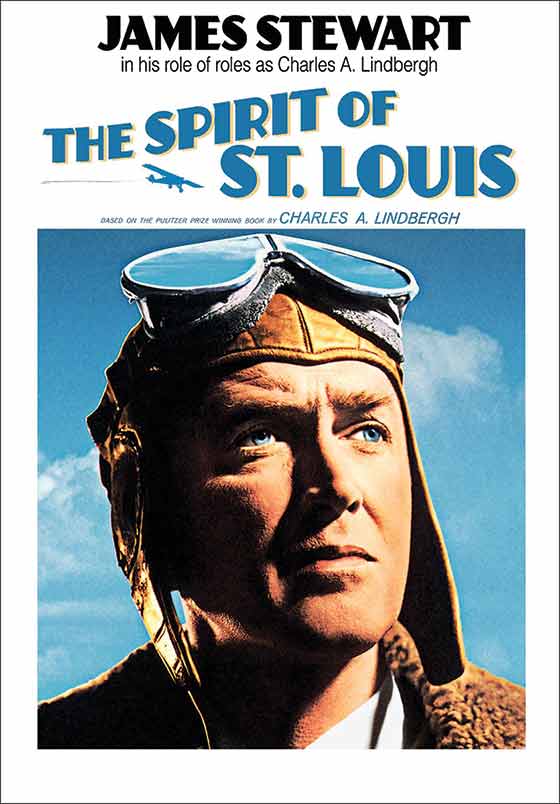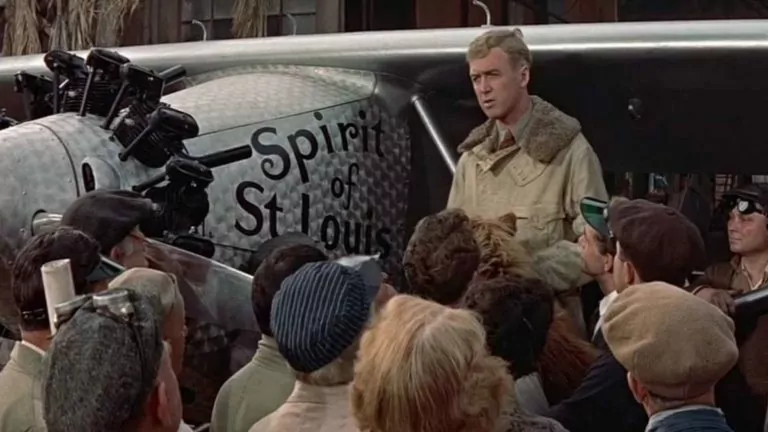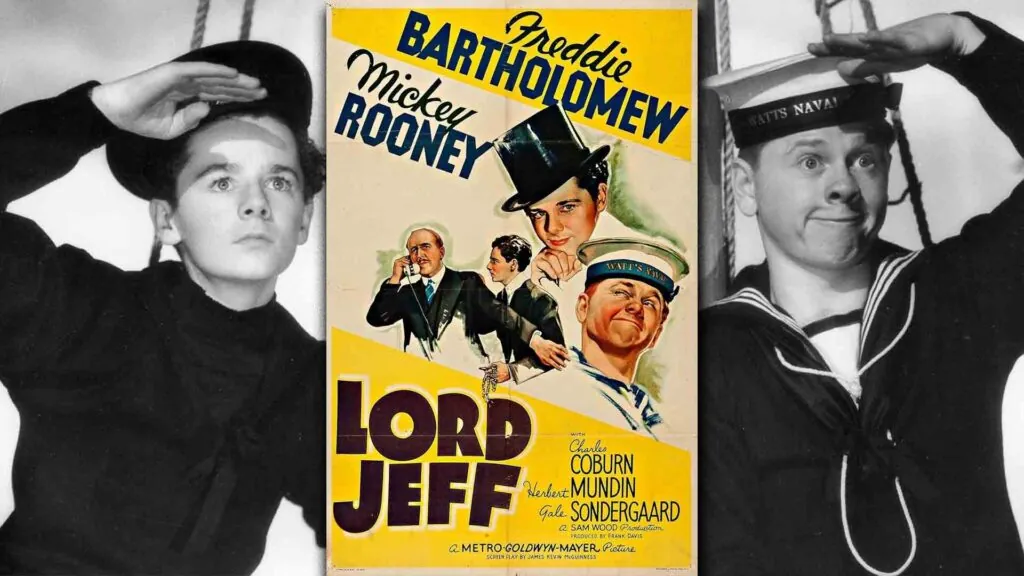 Family / Biography
Family / Biography
1957 / 135 minutes
RATING: 7/10
Charles Lindbergh’s 1927 flight wasn’t the first to cross the North Atlantic. That was accomplished 8 years earlier, in May of 1919, by a crew of United States Navy aviators flying in a biplane equipped with floats. The floats were so it could land on the water, which it did a number of times to give the crew time for repairs and rest. Their flight, from New York State to Lisbon, Portugal took 19 days.
That flight has largely been forgotten because it was eclipsed, just two weeks later, by a pair of British aviators, John Alcock and Arthur Brown, teaming up to make the first non-stop flight across the Atlantic. They took a far shorter route, flying from Newfoundland, to Ireland. Their biplane managed the journey in just under 16 hours, crash-landing in a bog the pilots mistook for a suitable landing field. Both men were unharmed.
So why is Charles Lindbergh’s crossing the one best remembered? One reason was the $25,000 Orteig Prize for the first successful non-stop flight from New York to Paris. It had been offered since 1919, but despite a number of efforts over the next 8 years, no one had yet managed to claim it. Another reason was that Lindbergh’s flight was the first solo flight across the Atlantic. And the third reason is related to the first – by flying between two major international cities, New York and Paris, Lindbergh’s flight showed the world that commercial aviation was a real possibility. Just a dozen years later the first commercial transatlantic flights began.
But enough history, how was the film?
Well, if you like Jimmy Stewart, or appreciate biographical films, or enjoy learning even as you’re entertained, or have wanted to know more about Charles Lindbergh, or want a nice family film, then you’re sure to enjoy The Spirit of St. Louis.
The film is named after Lindbergh’s plane, and the story begins on the night before his journey begins. Even as “Slim” is tossing and turning, trying to catch some sleep before he begins what could be a 40-hour flight, he starts remembering what led him to this point. We see, in these flashbacks, and others that take place during the flight, how Lindbergh first bought his first plane, how he handled his job as a mail aviator in terrible weather conditions, how he convinced a group of St. Louis businessmen to back his transatlantic attempt, and how the Spirit of St. Louis was designed and built.
Some of these recollections are told to a stowaway – a fly who comes along for the first part of the flight. It’s a charming device, which our kids really enjoyed – Lindbergh points out to the fly where they are on the map and how long they’ve been flying. I was even a little disappointed when the fly decides he’d prefer to stay on this side of the Atlantic, and takes his leave out the open cockpit window.
For some kids and adults, used to more frenetic action, the pacing might strike them as a bit slow. The film is also long, at more than two hours, and I suspect it might have lost our kids’ attention if we hadn’t watched it in two separate chunks. But broken up that way, it kept the attention of our whole family from 4 to 46.
Cautions
The topic matter of the film raises a few issues that could be worth talking about with the kids. The first is hero-worship. Lindbergh had drive, skill, and charisma – we can’t help but root for him. But what the film doesn’t get into is his failings – he had several affairs. Of course, our kids don’t need to know all about that, but it is good to remember that our heroes have feet of clay, so we should not put them on a pedestal.
Another topic worth a discussion is, what sort of risk is appropriate? Lindbergh was probably not a Christian and likely an agnostic, so he wasn’t assessing risk from a Christian perspective. But we can. And in light of the other pilots who had died earlier trying this same flight, was it a good and worthy thing for Lindbergh to attempt? Or was he treating carelessly the life that God had entrusted to his stewardship? Questions worth discussing.
Finally, Lindbergh’s religious views do come up, briefly, in the film. Lindbergh was a private man, so his religious views seem hard to nail down, but he wasn’t an orthodox Christian. However it’s said he flew combat missions in World War II with a New Testament, and later spoke of the importance of Jesus’ ethics. In the film his muddled thinking about God comes up in a few brief scenes. First, Lindbergh notes that when he flies he doesn’t ask God for help. A Roman Catholic priest tries to set him right, and later on a friend superstitiously sneaks a St. Christopher’s Medal on the flight for good luck (the medal is thought, by Catholics, to ask the saint to bless a traveler’s journey). Finally, as he is at the end of his flight, sleep-deprived and unsure he can land it, he tries to recall one of the priest’s prayers, and ends up simply crying out to God for help. This confusion about God might be surprising to very young viewers, and worth a discussion.
Conclusion
The 49-year-old Jimmy Stewart was playing a man 24 years his junior, and if Lindbergh seems a little older than 25, Stewart still pulls it off. This is an interesting bit of history, charmingly acted. Another good one for the whole family.












